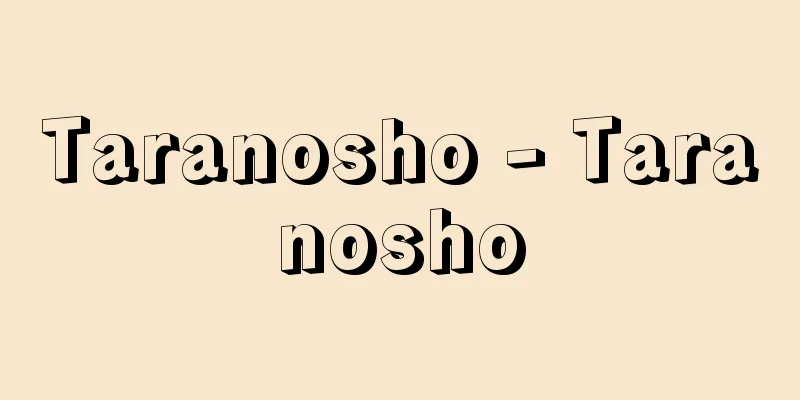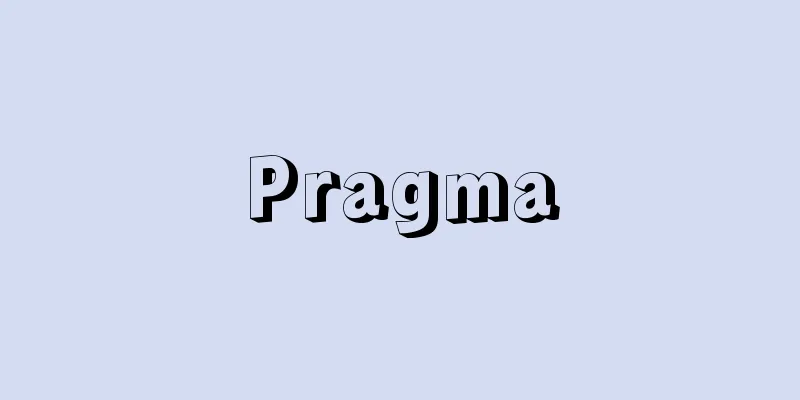Glider competition - Glider competition

|
Gliding is a sport in which gliders are piloted and compete in terms of gliding distance and gliding speed. Like all other types of sport flying, glider flying is managed and governed by the FAI (Fédération Aéronautique Internationale, founded in 1905). The FAI has a specialized agency for gliding called the CIVV (Commission Internationale de Vol à Voile), and the NACs (National Aero Clubs, full members of the FAI) exercise the authority and duties for records, competitions, and skill tests. In Japan, the Japan Aeronautic Association (JAA) is the NAC, and the Japan Soaring Association (JSA) is the national governing body for gliding clubs and federations in Japan. [Toshihisa Watanabe] Gliding recordGlider records are managed by each country's NAC in accordance with the FAI Sporting Code. Glider records are ranked as Class D among aircraft records and are classified as one of the World Class Records. If the best national record is submitted to the FAI and approved, it is registered as a World Class Record. There are 12 types of records depending on the type of flight: (1) Straight-line distance (kilometers) [Toshihisa Watanabe] Gliding ChampionshipThe World Gliding Championships are held every two years under the auspices of the NAC, based on the FAI Sporting Code. There are many other continental championships, national championships, and international competitions, but the competition content has shifted to speed competitions on courses of 100 kilometers or more. Since 1978, there have been three types of World Championships: Open Class (a class with no special restrictions on gliders), 15m Class (a class with wingspans up to 15 meters), and Standard Class (a class with special standards to promote simple and inexpensive gliders). The competition events are mainly speed events on triangular or round-trip courses of about 200 to 500 kilometers, and also include distance events. On the day of the competition, the best performer in each event is given a score of 1000 points, and the points are scored proportionally according to a certain formula, and the total points of all the events for each athlete are tallied, and the person with the highest score is named the champion. In domestic competitions and beginner competitions, flight time competitions, altitude competitions, short distance competitions, and piloting skill competitions are also actively held. [Toshihisa Watanabe] Gliding SkillsGliding skills are recognised by the FAI International Gliding Badge as well as the Japanese Gliding Badge. The FAI International Gliding Badge Silver and Gold are awarded to those who pass the test by achieving a certain amount of flight time, altitude, and distance, while the Diamond is awarded for altitude, distance, and destination distance, and is attached to the Gold or Silver badge. Those who achieve these three Diamond badges are registered with the FAI. To participate in the World Championships, it is required to have at least a Gold badge. Recently, a 1000 km distance badge has also been established due to the improvement of gliding skills. The Japanese Gliding Badge was established in 1955 (Showa 30) as a national badge following the example of other countries, and is awarded to those who make their first solo flight, B to those who have mastered basic techniques, C to those who have mastered basic gliding techniques, and Bronze to those who have mastered basic outdoor flying skills. The Bronze badge was established uniquely for Japan, modeled after the UK, and takes into account domestic conditions for outdoor landings. In Japan and the UK, those who do not have this Bronze badge are not allowed to take the FAI distance test. [Toshihisa Watanabe] Glider pilot's licenseIn Japan and the United States, pilots must be qualified with a private pilot or commercial pilot certificate issued by a government authority (limited to advanced gliders or motorized gliders) and must have an annually renewed aviation medical certificate. However, few countries require government-issued licenses, and in the UK and other European countries, it is often left to the discretion of the national aviation associations to manage them. [Toshihisa Watanabe] Subsequent developmentsAs of April 2008, there are 20 records based on the type of flight: (1) Straight-line distance (kilometers) [Editorial Department] [Reference] |Source: Shogakukan Encyclopedia Nipponica About Encyclopedia Nipponica Information | Legend |
|
グライダーを操縦して滑空距離、滑空速度などを競うスポーツ。グライダー飛行は、すべての他の種類の航空機によるスポーツ飛行と同じくFAI(Fédération Aéronautique Internationale国際航空連盟、創立1905年)の管理と統括の下にある。FAI機構のなかに滑空に関する専門機関としてCIVV(Commission Internationale de Vol à Voile国際滑空委員会)が設けられており、FAI正会員であるNAC(National Aero Club正会員の各国航空協会)がこれら記録、競技、技能検定などの業務と権限を行使している。日本では財団法人日本航空協会(Japan Aeronautic Association略称JAA)がNACにあたり、傘下機関として社団法人日本滑空協会(Japan Soaring Association略称JSA)がわが国の滑空に関するクラブ、連盟などの全国的統括団体となっている。 [渡辺敏久] 滑空記録グライダーによる記録飛行はFAIスポーツ規定Sporting Codeに基づき各国のNACが管理する。グライダーの記録は、航空機の諸記録のうちD級にランクされ、世界級別記録の一つとして分類される。各国公認記録のうち最高のものがFAIに申請され公認された場合、世界級別公認記録として登録される。 記録には飛行の種類により次の12種類がある。 (1)直線距離(キロメートル) [渡辺敏久] 滑空選手権世界滑空選手権は、FAIスポーツ規定に基づいてNACの主催で2年ごとに開催される。このほか大陸選手権、各国ごとの選手権、国際競技会など数多くあるが、競技内容は、すべて100キロメートル以上のコースの速度競技に移行している。世界選手権には、1978年以降、オープン級(グライダーに特別の制限がない級)、15メートル級(翼幅が15メートルまでの級)、スタンダード級(簡易で安価なグライダー奨励のために特別な規格を定めた級)の3種類がある。競技課目は、200キロメートルから500キロメートルくらいまでの三角コースまたは目的地往復コースによる速度競技が主体で、そのほかに距離競技が含まれる。いずれも競技当日、課目別に最高の成績を示した者の得点を1000点として、一定の公式により順次比例的に採点を行い、各選手のすべての課目の総合得点を集計し、最高点を取得した人を選手権者として指名する。国内競技や初心者競技などの場合には、滞空時間競技、高度競技、短距離競技、操縦技能競技なども盛んに行われている。 [渡辺敏久] 滑空技能滑空技能はFAI国際滑空記章ならびに日本滑空記章によって表される。 試験課目は、FAI国際滑空記章の銀章、金章の場合は、一定の滞空時間、獲得高度、飛行距離の三つを達成し合格した者に与えられ、ダイヤモンド章は、高度、距離、目的地距離のそれぞれに対して与えられ金章または銀章に取り付けられる。これら三つのダイヤモンド章を達成した者はFAIに登録される。前記の世界選手権に参加するには少なくとも金章以上の記章を所有することが定められている。また最近は、滑空技能の向上により1000キロメートル距離章も制定された。日本滑空記章は各国に倣い国内章として1955年(昭和30)に制定されたもので、初めて単独飛行した者にA章、基本技術を習得した者にB章、基礎的滑翔(かっしょう)技術を習得した者にC章、基礎的野外飛行技能を習得した者に銅章が与えられる。銅章はイギリスに範をとり日本独自に定めたもので、野外着陸に対する国内条件を考慮している。日本やイギリスでは、この銅章を所有しなければFAI距離課目の受験は認められていない。 [渡辺敏久] グライダー操縦の免許証日本やアメリカでは、政府当局の発行する自家用操縦士か事業用操縦士の技能証明書(上級滑空機か動力滑空機の限定を受ける)による資格をもち、かつ毎年更新する航空身体検査証明を有していなければならない。ただし、このように政府発行の免許証を必要とする国は少なく、イギリスをはじめ欧州諸国では民間の各国航空協会の自主管理に任されている場合が多い。 [渡辺敏久] その後の動き2008年4月現在、記録には飛行の種類により次の20種類がある。 (1)直線距離(キロメートル) [編集部] [参照項目] |出典 小学館 日本大百科全書(ニッポニカ)日本大百科全書(ニッポニカ)について 情報 | 凡例 |
Recommend
Gustofacial reaction
...From this, it can be inferred that tastes are ...
Metaphysical painting - pittura metafisica
A school of Italian painting in the early 20th ce...
Lothal
A major ruin from the Indus Valley Civilization ci...
Little Egypt
…The name was given to the area during the early ...
Patrick Christopher Steptoe
1913‐88 British obstetrician-gynaecologist. He ser...
Public transport - public transport
Public transportation refers to transportation wit...
Suspension - Kakeobi
This refers to the obi attached to the mo (skirt) ...
Food to drink - Kasshikimono
〘Noun〙 A Noh piece that features a half-monk, half...
Pros Titon; The Letter to Titus
The Book of Titus is one of Paul's pastoral ep...
Pannonii
Pannonia was a Roman province inhabited by the Pa...
Japanism
…In recent years, interest in traditional Japanes...
Naisougata - Internal performance
One of the litigation agencies of the Muromachi Sh...
rouille
...When the seafood is cooked, remove it from the...
Dragon King Belief
The Dragon King is a personification of the dragon...
Kaya [town] - Kaya
An old town in Yosa District, located in the upper...









